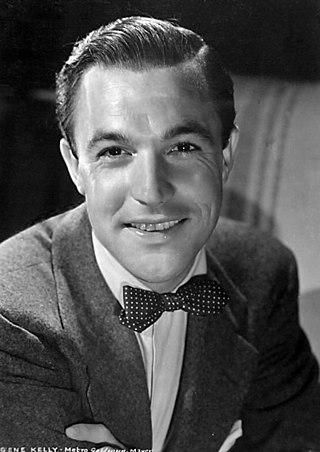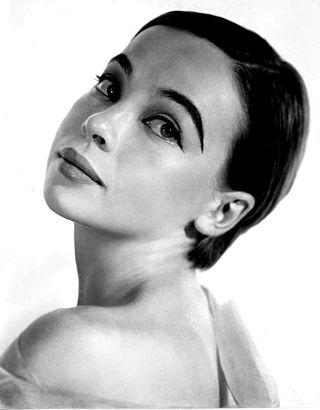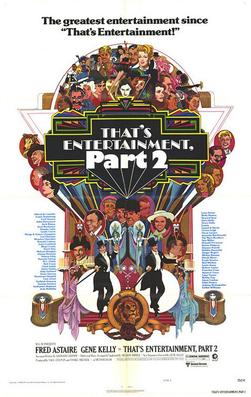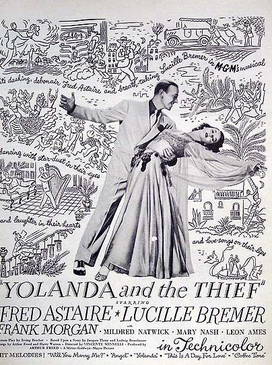
Eugene Curran Kelly was an American dancer, actor, singer, director and choreographer. He was known for his energetic and athletic dancing style and sought to create a new form of American dance accessible to the general public, which he called "dance for the common man". He starred in, choreographed, and co-directed with Stanley Donen some of the most well-regarded musical films of the 1940s and 1950s.

Leslie Claire Margaret Caron is a French and American actress and dancer. She is the recipient of a Golden Globe Award, two BAFTA Awards and a Primetime Emmy Award, in addition to nominations for two Academy Awards.

Fred Astaire was an American dancer, actor, singer, musician, choreographer, and presenter. He is widely regarded as the "greatest popular-music dancer of all time". He received numerous accolades including an Honorary Academy Award, three Primetime Emmy Awards, a BAFTA Award, two Golden Globe Awards, and a Grammy Award. He was honored with the Film Society of Lincoln Center tribute in 1973, the Kennedy Center Honors in 1978, and AFI Life Achievement Award in 1980. He was inducted into the Hollywood Walk of Fame in 1960, American Theatre Hall of Fame in 1972, and the Television Hall of Fame in 1989.

Cyd Charisse was an American dancer and actress.
"Something's Gotta Give" is a popular song with words and music by Johnny Mercer in 1954. It was published in 1955. It was written for and first performed by Fred Astaire in the 1955 musical film Daddy Long Legs, and was nominated for an Academy Award in 1955 as Best Original Song, losing to "Love is a Many Splendored Thing" from the film of the same name.

You Were Never Lovelier is a 1942 American musical romantic comedy film directed by William A. Seiter and starring Fred Astaire and Rita Hayworth. The supporting cast also features Adolphe Menjou, Xavier Cugat and Adele Mara. The music was composed by Jerome Kern and the lyrics by Johnny Mercer. The picture was released by Columbia Pictures and includes the elaborate "Shorty George" and romantic "I'm Old Fashioned" song and dance sequences.

The Sky's The Limit is a 1943 romantic musical comedy film starring Fred Astaire and Joan Leslie, with music by Harold Arlen and lyrics by Johnny Mercer. The film was directed by Edward H. Griffith, and released by RKO Radio Pictures. Astaire plays a Flying Tiger pilot on leave. Robert T. Smith, a real former Flying Tiger pilot on leave before joining the Army Air Forces, was the technical adviser on the film. The comedy is provided by Robert Benchley — his second appearance in an Astaire picture — and Eric Blore, a stalwart from the early Astaire-Rogers pictures.

That's Entertainment, Part II is a 1976 American compilation film released by Metro-Goldwyn-Mayer and a sequel to That's Entertainment! (1974). Like the previous film, That's Entertainment, Part II was a retrospective of famous films released by MGM from the 1930s to the 1950s. Some posters for the film use Part 2 rather than Part II in the title.

Yolanda and the Thief is a 1945 American Technicolor MGM musical-comedy film set in a fictional Latin American country. It stars Fred Astaire, Lucille Bremer, Frank Morgan, and Mildred Natwick, with music by Harry Warren and lyrics by Arthur Freed. The film was directed by Vincente Minnelli and produced by Arthur Freed.

Three Little Words is a 1950 American musical film biography of the Tin Pan Alley songwriting partnership of Kalmar and Ruby. It stars Fred Astaire as lyricist Bert Kalmar and Red Skelton as composer Harry Ruby, along with Vera-Ellen and Arlene Dahl as their wives, with Debbie Reynolds in a small but notable role as singer Helen Kane and Gloria DeHaven as her own mother, Mrs. Carter DeHaven. The film, released by Metro-Goldwyn-Mayer, was written by Academy-Award-winning screenwriter George Wells, directed by Richard Thorpe and produced by Jack Cummings. Harry Ruby served as a consultant on the project, and he appears in a cameo role as a baseball catcher. The third in a series of MGM biopics about Broadway composers, it was preceded by Till the Clouds Roll By and Words and Music and followed by Deep in My Heart.

This is a comprehensive guide to over one hundred and fifty of Fred Astaire's solo and partnered dances compiled from his thirty-one Hollywood musical comedy films produced between 1933 and 1968, his four television specials and his television appearances on The Hollywood Palace and Bob Hope Presents the Chrysler Theatre which cover the period from 1958 to 1968. Further information on the dance routines may be obtained, where available, by clicking on the film links.

Shall We Dance is a 1937 American musical comedy film directed by Mark Sandrich. It is the seventh of the ten Fred Astaire-Ginger Rogers films. The story follows an American ballet dancer (Astaire) who falls in love with a tap dancer (Rogers); the tabloid press concocts a story of their marriage, after which life imitates art. George Gershwin wrote the symphonic underscore and Ira Gershwin the lyrics, for their second Hollywood musical.

Daddy-Long-Legs is a 1912 epistolary novel by the American writer Jean Webster. It follows the protagonist, Jerusha "Judy" Abbott, as she leaves an orphanage and is sent to college by a benefactor whom she has never seen.

Barrie Chase is an American actress and dancer.

Daddy-Long-Legs is a 1919 American silent comedy-drama film directed by Marshall Neilan, and based on Jean Webster's 1912 novel Daddy-Long-Legs. The film stars Mary Pickford.
Daddy longlegs or daddy long legs may refer to:

Daddy Long Legs (1931) is an American pre-Code film directed by Alfred Santell and starring Janet Gaynor and Warner Baxter. The story involves an orphan who is taken under the wing of a wealthy benefactor.

Daddy Long Legs or Vadertje Langbeen is a 1938 Dutch romantic comedy film directed by Frederic Zelnik, based on Jean Webster's 1912 novel of the same name - one of several adaptations of that book.
Tom C. Keogh was an international fashion illustrator, graphic artist, and set and costume designer who married dancer and novelist Theodora Keogh, née Roosevelt, the granddaughter of President Theodore Roosevelt. Born in San Francisco, Tom Keogh studied at the California School of Fine Arts and the Chouinard School of Painting. In 1944 he moved to New York to work as an illustrator for Barbara Karinska, the theatre, ballet and film designer. After their wedding the Keoghs moved to Paris.

Daddy Long Legs is a stage musical with a book by John Caird, and music and lyrics by Paul Gordon. It is based on the 1912 novel of the same name by Jean Webster. Set in turn-of-the-century New England, the musical tells the story of orphan Jerusha Abbott of the John Grier Home and her mysterious benefactor who agrees to send her to college, who she dubs "Daddy Long Legs" after seeing his elongated shadow. Under the conditions of her benefactor, Jerusha sends him a letter once a month, describing her new-found experiences with life outside the orphanage.
















